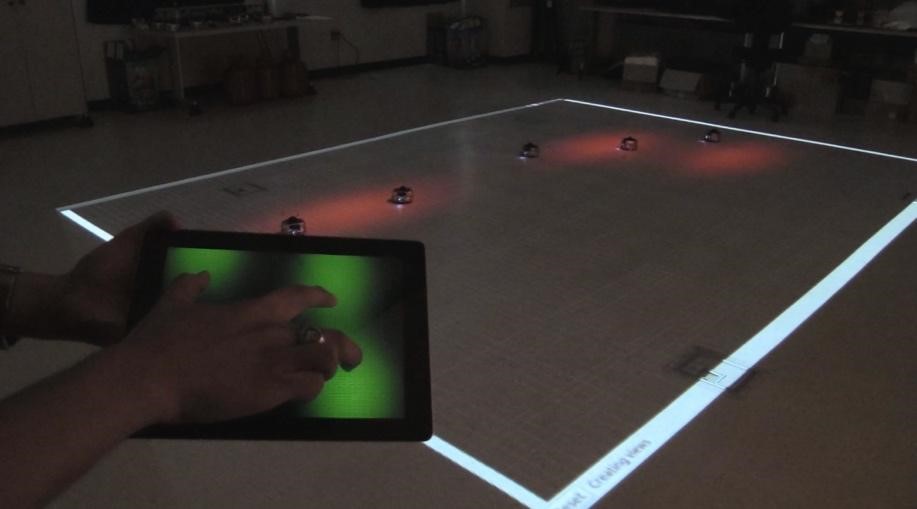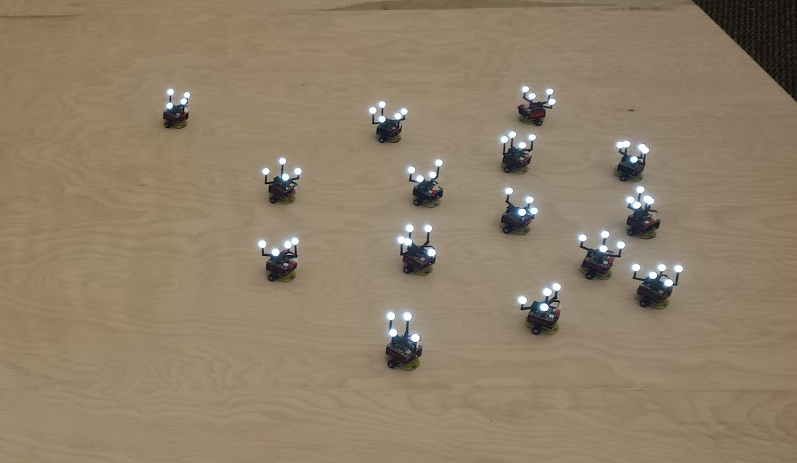Georgia Tech researchers have developed a new system for directing robot swarms through an evolving environment. The system leverages a touchable screen, such as a smart tablet, and translates touches into a time-varying density function for guiding the robot swarm. Each small robot in the swarm is equipped with sensors and a processor that allows it to determine its placement relative to the other robots. The swarm can act in a scripted formation wherein each individual robot coordinates its own task to accomplish a sequence of motions assigned to the whole.
At the center of this system is a novel algorithm that determines coordination and motion among the robots. This algorithm allows the human operator to make decisions about the robots’ behaviors without having to focus on any individual member of the robot team. Overall, this innovation provides a reliable, robust, and flexible solution for the way humans interact with large systems of robots.
- Intelligent: Minimizes the driving distance for each robot automatically and adapts to changes in the environment
- Efficient: Covers a large area more efficiently than one single, large robot
- Robust: Builds in collision avoidance and self-corrects to changes in the swarm, such as individual robot failures
- User-friendly: Communicates with the swarm through an intuitive touch interface on a tablet, so extensive training and a background in robotics is not required by the end user
- Surveillance
- Defense and national security
- Disaster relief
- Agriculture
- Search and rescue
- Education and entertainment
Swarm robotics has already proved to be a cost-effective, proficient means of automating tasks that require coverage of large areas. Earlier robot swarm systems, however, have been limited to static environments and have not allowed for human operators to interact with them adaptively. This innovation allows for optimal coverage control in a constantly changing environment and gives the user authority to change the robots’ collective motion. Since each individual robot coordinates its motion relative to the position of other members of the swarm, the robots do not rely on communicating with each other and the likelihood of crashing is minimized.

The swarm is controlled by the user’s touch on a tablet.

An example of a small robot swarm that could be guided through this method
